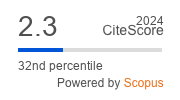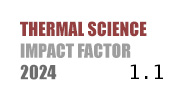THERMAL SCIENCE
International Scientific Journal
Authors of this Paper
External Links
DEFORMATION PREDICTION METHOD OF SOFT ROCK IN DEEP SHAFT BY MACHINE LEARNING
ABSTRACT
Predicting the unsupported deformation behavior of a shaft is crucial for evaluating the stability of the rock mass, selecting an appropriate support scheme. Random forest, XGBoost, LightGBM, and K-nearest neighbors regression models were trained for database, and their accuracy was evaluated. It aimed to examine the effects of various parameters on shaft deformation, including the maximum tangential stress of the surrounding rock, elastic modulus, Poisson's ratio, cohesion, internal friction angle, and rock mass compressive strength. The results indicate that the coefficient of determination for random forest model is outperformed the other models. The importance of the characteristic parameters, in order, is cohesion, rock mass compressive strength, elastic modulus, rock compressive strength, internal friction angle, Poisson's ratio, and maximum tangential stress of the surrounding rock.
KEYWORDS
PAPER SUBMITTED: 2024-08-20
PAPER REVISED: 2024-11-08
PAPER ACCEPTED: 2024-11-22
PUBLISHED ONLINE: 2025-06-01
DOI REFERENCE: https://doi.org/10.2298/TSCI2502395W
CITATION EXPORT: view in browser or download as text file
PDF VERSION [DOWNLOAD]
2025 Society of Thermal Engineers of Serbia. Published by the Vinča Institute of Nuclear Sciences, National Institute of the Republic of Serbia, Belgrade, Serbia. This article is an open access article distributed under the terms and conditions of the Creative Commons Attribution-NonCommercial-NoDerivs 4.0 International licence

